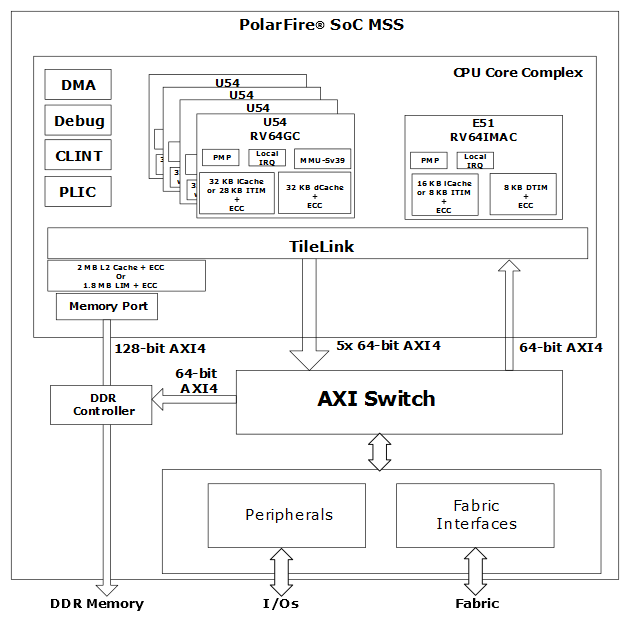The PolarFire® SoC family offers the industry's first RISC-V based SoC FPGAs. The PolarFire SoC family combines a powerful 64-bit 5x core RISC-V Microprocessor Sub-System (MSS), based on SiFive’s U54-MC family, with the PolarFire FPGA fabric in a single device. Packed with this powerful combination, PolarFire SoC devices offer the scalable features of FPGAs and high-performance of ASICs. Only the FPGA fabric resources vary and the MSS remains the same across PolarFire SoC device variants, making these devices ideal for a variety of applications. PolarFire SoC FPGAs are ideal for running full-fledged Operating Systems (like Linux®) using MSS.
This manual covers the PolarFire SoC MSS architecture and its functional blocks—the CPU Core Complex, AXI Switch, MSS peripherals, Fabric interfaces, and MSS DDR controller. For information about configuring MSS, see Standalone MSS Configurator User Guide for PolarFire SoC . For information about PolarFire SoC software development and tool flow, and MSS booting, see PolarFire SoC Software Development and Tool Flow User Guide .
The following figure shows the MSS block at a high-level. For more details, see Figure 1.
